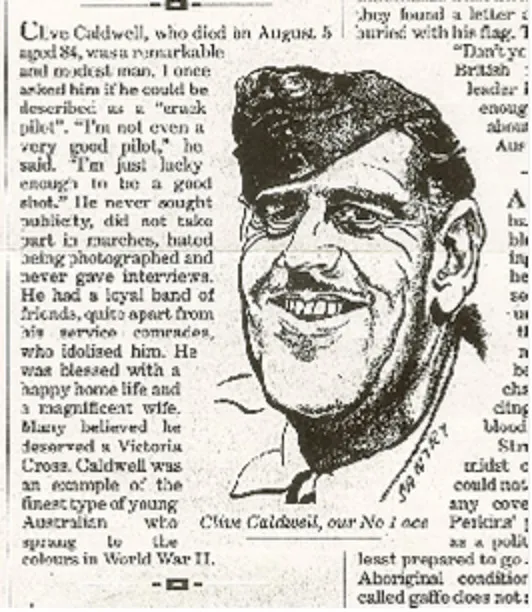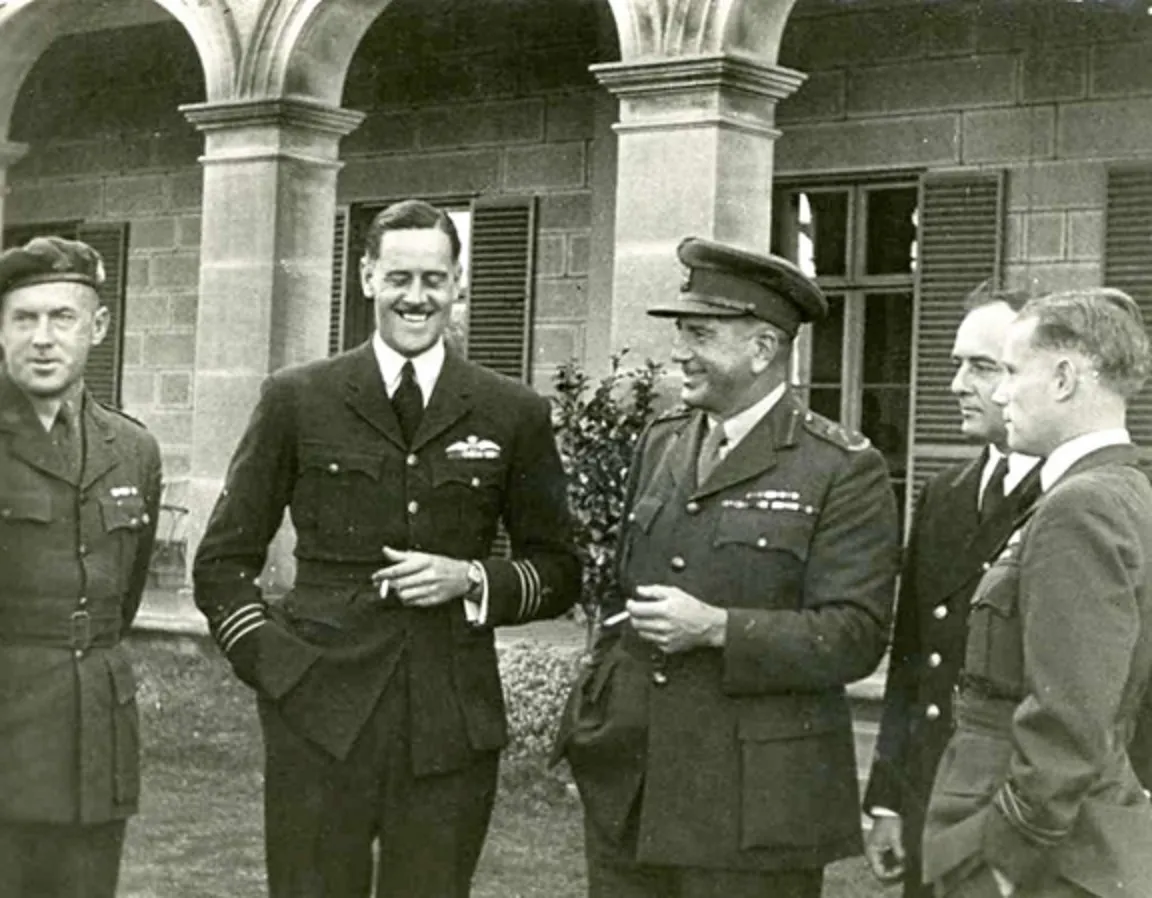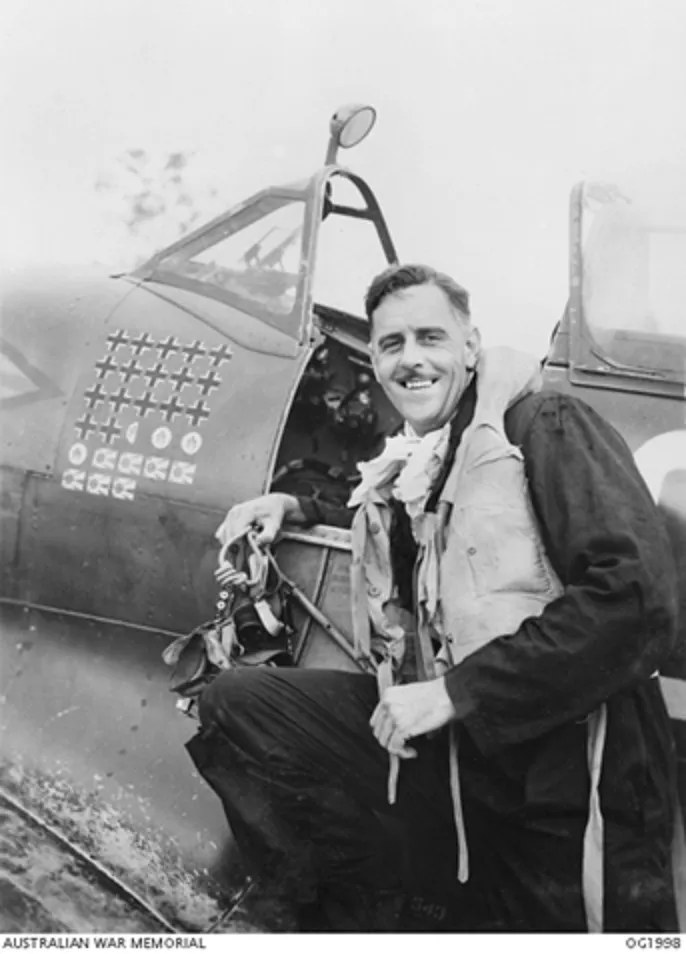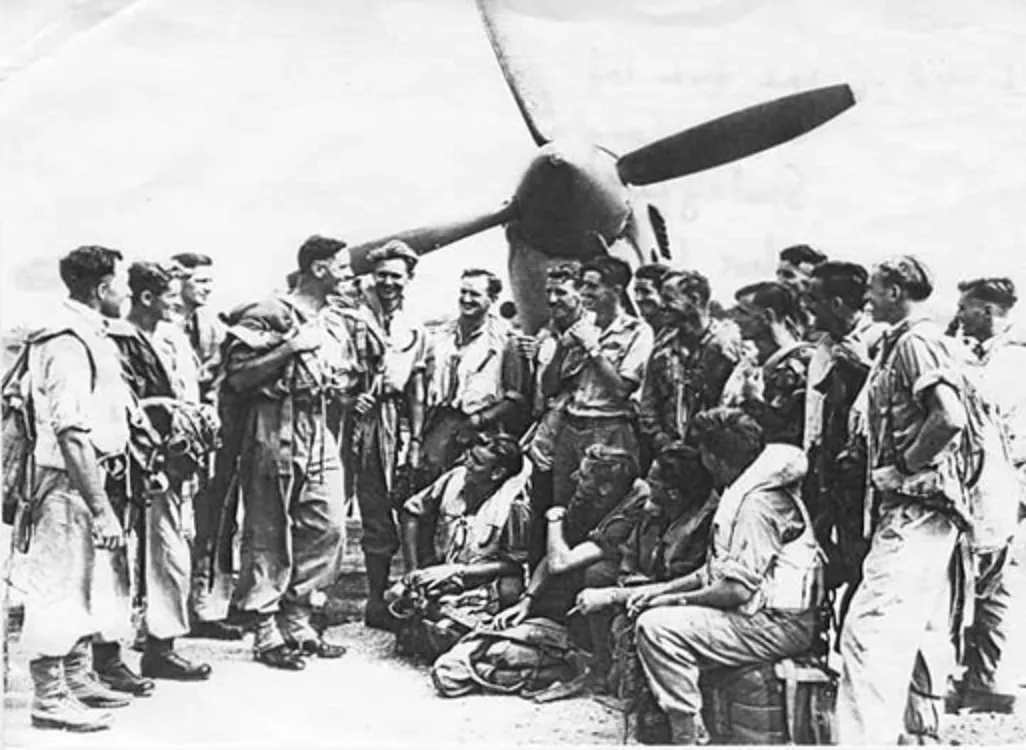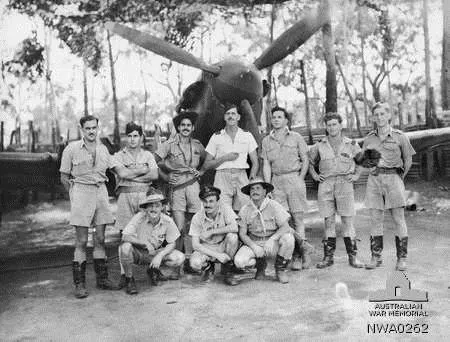GPCAPT Clive Robertson Caldwell 402107
DFC + Bar, DSO
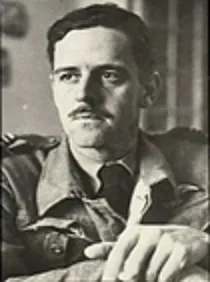


| Squadron/s | 452 SQN 112 SQN RAF |
| Rank On Discharge/Death | Group Captain (GPCAPT) |
| Nickname | Killer |
| Mustering / Specialisation | Pilot |
| Date of Birth | 28 Jul 1910 |
| Date of Death | 05 Aug 1994 |
Born in Sydney Clive became the highest scoring fighter pilot of the RAAF. Clive “Killer” Caldwell always wanted to fly; he became an outstanding airman and a popular national hero. After working for the Bank of NSW for a time he enlisted when World War II broke out. At thirty years he was considered to be too old for flight training but there was no way that he was going to miss out, and so he reduced his age by three years on his application to enlist and was accepted.
Clive was in the Royal Aero Club before the war and had already learnt to fly. Joining the RAAF and in 1941 he was sent to the Middle East, where he first flew P-40 Tomahawks in 250 Squadron RAF and later Kittyhawks as commander of 112 Squadron RAF.
The skill of his flying, and the accuracy of his shooting, soon established Caldwell as a leading "ace" in the Western Desert; eventually he shot down more than 20 German and Italian aircraft with a total of 28 1/2 victories in all by the end of the war. At one time in combat, his plane was badly hit and he was wounded. Despite this, he destroyed an enemy Messerschmitt and drove off another. Another day, he shot down five German Junkers Ju 87s.
In late 1942 Clive returned to assist in the defence of Australia against the Japanese. He took command of No. 1 Fighter (Spitfire) Wing based at Darwin and by August 1943 he had added eight Japanese aircraft to his score. In 1944 he led 80 Fighter Wing, and in early 1945 moved to Morotai. As the Americans took an increasing role in the air war, Australian fighter squadrons were left with less important work; many pilots now felt they were risking their lives for little purpose. Discontent culminated in Clive and a group of officers proffering their resignations. This became known as the "Morotai Mutiny".
The matter was handled very poorly by the Chief of the Air Staff, who was determined to take some disciplinary action. This resulted in the end of Clive's active flying career. The episode left a bitter taste. After the war, he became a successful businessman and only spoke modestly of his heroic part in the war.
However Air Marshal Lord Tedder said of Clive Caldwell after his service in the Middle East …
"He was a fine commander, an excellent leader and a first class shot"
This was an accurate judgement and he was awarded the DSO, DFC (and bar) along with the Polish Cross of Valour. He was given the nickname "Killer" probably due his emphasis on gunnery and his shooting ability. He never liked this nickname that was bestowed on him but was unable to shake it off. He showed enormous aggression in combat and a desire to engage the enemy wherever it might be found. On one occasion in Africa he returned to fight the enemy in a damaged aircraft despite being injured in the face, arms and legs.
Success didn't come immediately. It took about thirty missions before Clive scored his first victory, but after that his triumphs came with increasing frequency.
While flying with 112 and 250 Squadrons in the Middle East he accounted for twenty and a half enemy aircraft and his additional eight victories occurred in the Pacific.
Clive was described as a fast talking, quick acting man with excuberant confidence. However in battle his chief characteristic was unyielding determination. This is revealed clearly in his combat report of an action over the Western Desert when a large German formation was engaged:
"At 300 yards I opened fire with all my guns at the leader of one of the rear sections…. And hit No 2 and 3, one of which burst into flames… the other going down smoking. After losing 1000 feet I then attacked the leader… from below and behind, opening fire with all guns at close range. The enemy aircraft turned over and dived steeply with the…. starboard wing in flames.. I was able to pull up under.. the one at the rear, holding the burst until very close…"
[Australian War Memorial transcript]
After the outbreak of the war in Japan Clive, who had proved himself the most deadly Australian pilot in the Midle East was asigned to a fighter wing at Darwin. On May 20 1943 he led Spitfires to meet a large force of Japanese bombers,escorted by fighters, over the Australian coast. He destroyed two enemy aircraft and boosted his total by six in subsequent battles. Clive could be outspoken and and was a critic of RAAF aircaft and battle tactics. He once wrote a devastating criticism of the Boomerang fighter, reporting that contrary to its name it was never likely to return form any encounter with enemy aircraft. Clive didn't continue flying after the war as he wasn't that keen on flying, although he was particularly good at it. Facsimile from The Bulletin, Aug 23, 1994